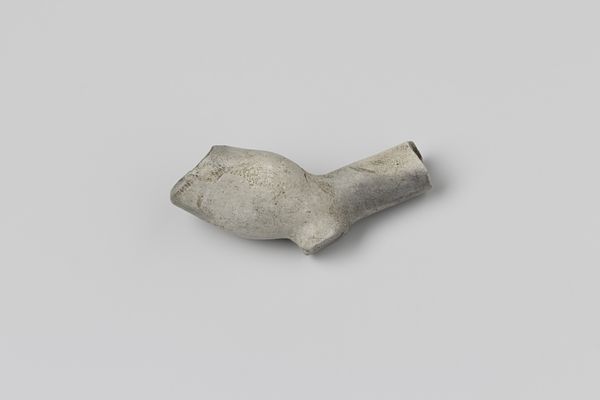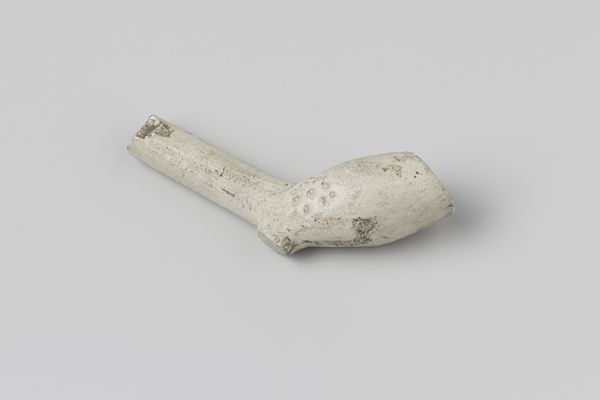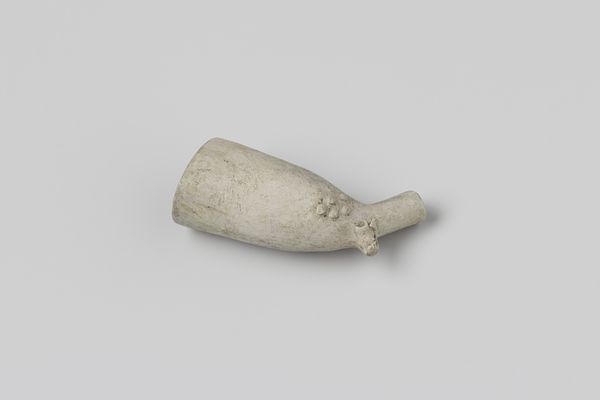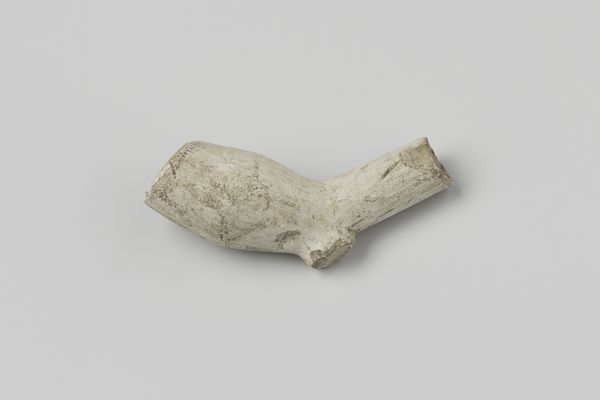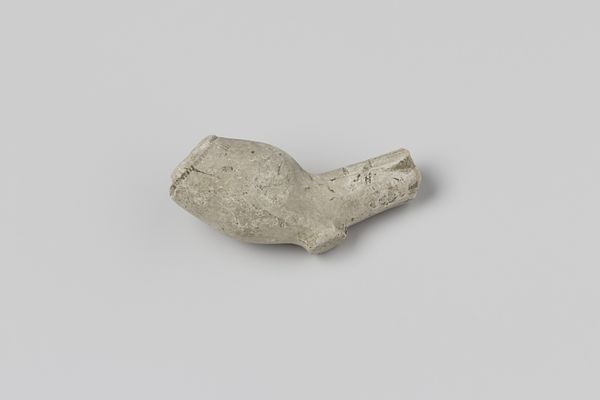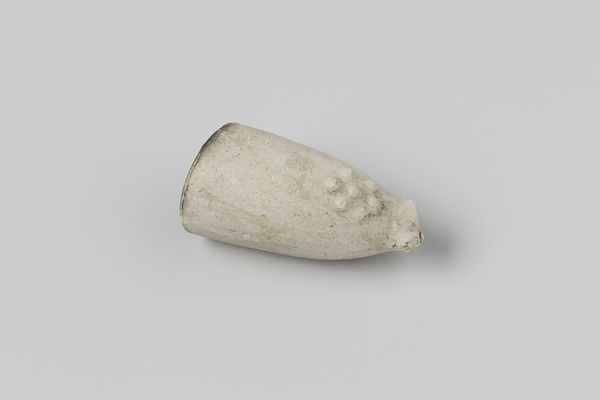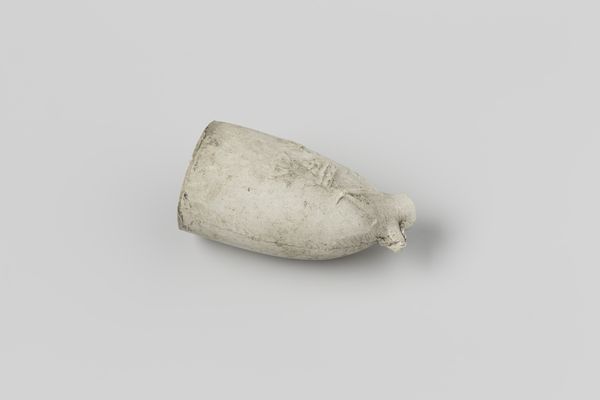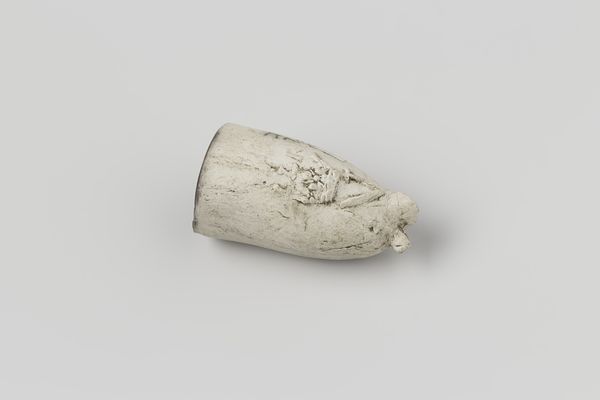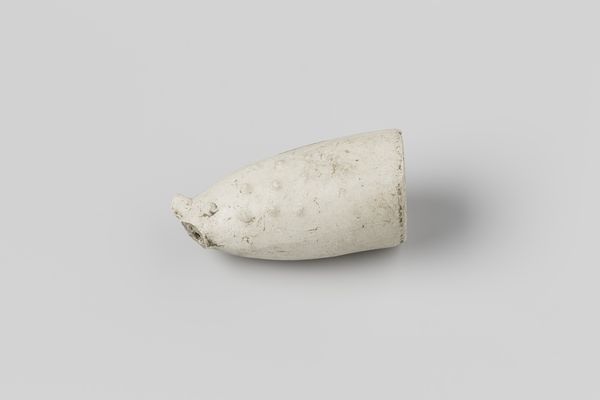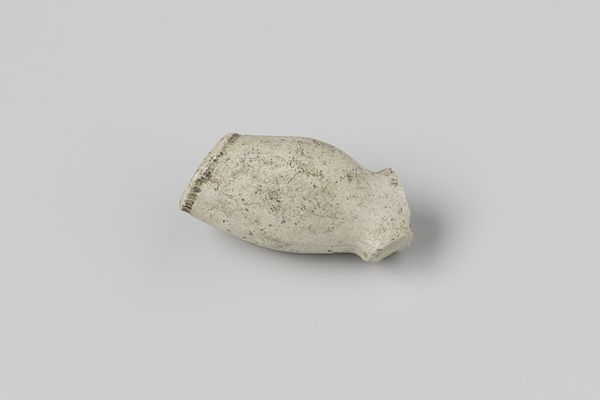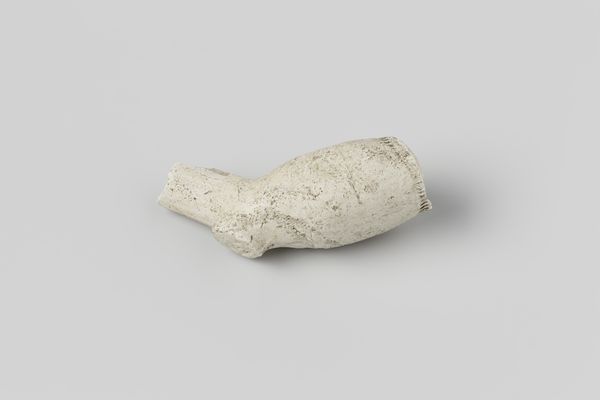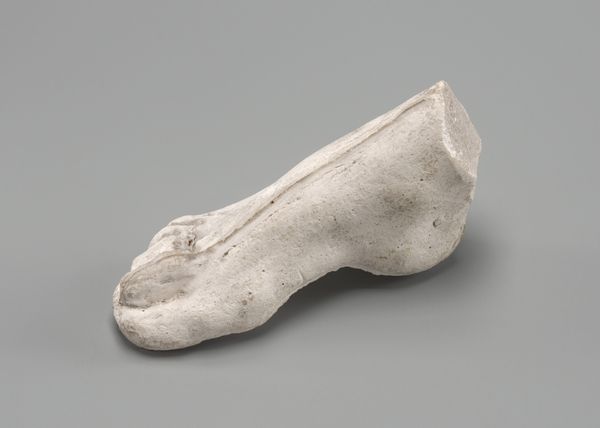
ceramic, earthenware
#
dutch-golden-age
#
ceramic
#
earthenware
Dimensions: length 3.8 cm, width 1.8 cm, length 5.0 cm
Copyright: Rijks Museum: Open Domain
Editor: Here we have a fragment of a tobacco pipe, made from earthenware sometime between 1630 and 1660. Even in its incomplete state, there’s a lingering sense of its use, a kind of ghostly pleasure perhaps. What do you make of this humble object? Curator: Indeed, it is humble, but think about the complex journey of tobacco, its initial ritualistic use among indigenous populations and its later appropriation as a global commodity. This fragment embodies that history. Editor: So it's less about the pipe itself, and more about what it represents? Curator: Exactly. The pipe, particularly in this broken state, speaks volumes about trade, cultural exchange, and even addiction. Look at the bowl shape; what does it remind you of? Editor: I guess, in a strange way, a human skull. Are you suggesting there’s some connection there, maybe a reminder of mortality? Curator: Precisely. Consider also the color, a kind of ghostly white. Smoking, though pleasurable, has a shadow side. Pipes like this could well have been decorated; perhaps those designs were charged with symbolic meaning now lost to us, lost like the rest of this fragile clay object. Editor: So even in its broken form, it's communicating all this history and cultural significance. Curator: Absolutely. Even fragments can be powerfully evocative. It triggers us to consider complex cultural histories of pleasure and death. Editor: I never thought I could find so much to read in a broken old pipe! Curator: History is hidden in plain sight, once you learn how to look!
Comments
No comments
Be the first to comment and join the conversation on the ultimate creative platform.
